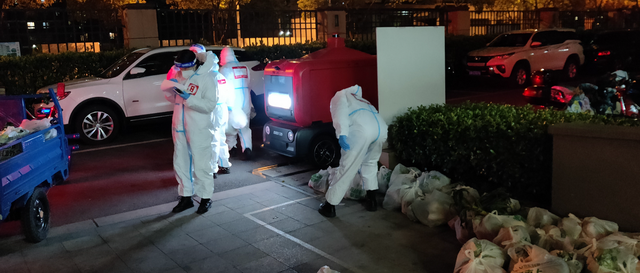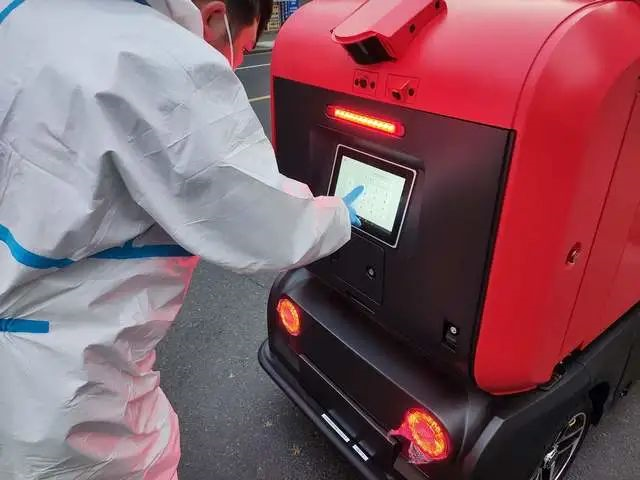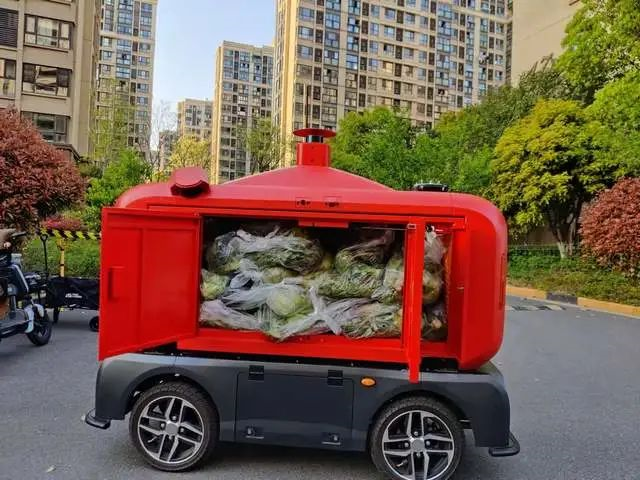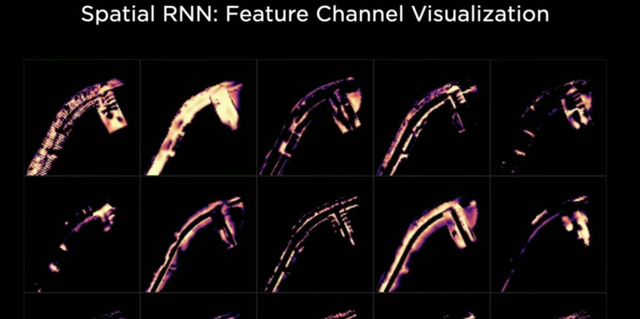Shanghai Automated Delivery in the Time of COVID-19
Author: Zhu Yulong
After writing “Automated Last-Mile Delivery in Shanghai under the Epidemic,” Bai, the CEO of E-Kuaizhi, sent me many photos. He also exchanged a lot of information with his friend in Pudong and the group we belong in.
Currently, it is understood that 50 unmanned delivery cars have been deployed to Shanghai by Meituan, and they are still inquiring about whether they can enter the campus. Under the current circumstances, schools really need transportation to deliver food.

▲Fig. 1. Use of Automated Delivery under COVID-19 in Shanghai
Present Conditions for Automated Delivery Cars in Shanghai
Currently, the conditions for unmanned transportation vehicles entering Shanghai mainly include:
(1) Communities with more than 3,000 people and requiring delivery of epidemic prevention materials;
(2) Communities that can issue epidemic prevention passes to facilitate work;
(3) A relatively spacious community road environment with a width of more than 2 meters for unmanned vehicle distribution;
(4) According to the epidemic prevention policy, unmanned vehicle instructors are required to be on-site during the lockdown period. Therefore, the community needs to confirm the identity of the volunteers and provide accommodation and meals to the instructors.
(5) The community can provide staff to learn how to use unmanned vehicles and assist the instructors in managing and loading the vehicles on a daily basis. Those who have been certified by the unmanned vehicle instructor can take over the use of unmanned vehicles in the future.

Currently, automated delivery cars can mainly help communities deliver contactless last-mile delivery under special circumstances, effectively reducing the problem of personnel gathering and contact. This solves the problem of transportation supplement under the conditions of constrained labor resources in the neighborhood committee and among volunteers.

At present, community delivery mainly includes government-distributed daily necessities, community group purchases of daily necessities such as vegetables, grains, and fruits. In actual design, it not only involves unmanned driving technology but also involves the update of the entire logistics system. Currently, delivery orders use only virtual mobile phone numbers, which is impossible with the old IT systems based on delivery logic; end-to-end digitalization for government-distributed materials that do not have mobile phone numbers is also needed.
From the perspective of improvement, the recommendations mainly include:- The supplies returned from community group purchases are delivered through virtual phone orders and delivery after citizens fill out their phone numbers on food delivery apps.
- Government-issued supplies also require virtual order delivery based on user phone numbers.
In this sense, the entire delivery system relies on mobile phones. It would be interesting to explore improvements through IT systems in the future.

System for Low-Speed Autonomous Vehicles
The autonomous driving system mainly consists of a perception system, decision-making and planning system, and control execution system. In the low-speed vehicle environment, hardware, software, algorithms, communications and other technologies are integrated. Due to its characteristics of “small, light, slow, and material”, the requirements for reliability and safety of autonomous driving technology are relatively low. Thus, it can be more quickly applied to unmanned logistics delivery.
In terms of operation, the perception system collects and analyzes roadside and vehicle information, makes decision planning, performs path planning, and timely handles abnormal situations. It sends instructions through the control system, and finally directs the vehicle to travel according to the instructions. At present, however, the small-scale delivery requires support for end-point maps, making it necessary to meet many prerequisites during the epidemic.

Logically, I think we can switch from the previous mainly Lidar mode to full-image and high-calculation mode, and then adjust the speed according to actual road conditions. At Tesla’s AI Day, Spatial RNN was discussed. Input information includes a 20x80x256 BEV (Bird’s Eye View) visual feature map and 1x1x4 self-vehicle motion information. If there are visual blind spots and blockages, the local map can be read and written to realize real-time construction in the area, which improves overall versatility.

 Summary: Many readers may not understand the current situation in Shanghai. With most residential areas closed for more than 20 or even 30 days and the current strategy of clearing cases, it is important to not overburden the community committees and volunteers while ensuring sufficient transportation capacity in the communities. It is hoped that low-speed autonomous driving can demonstrate better capabilities in Shanghai.
Summary: Many readers may not understand the current situation in Shanghai. With most residential areas closed for more than 20 or even 30 days and the current strategy of clearing cases, it is important to not overburden the community committees and volunteers while ensuring sufficient transportation capacity in the communities. It is hoped that low-speed autonomous driving can demonstrate better capabilities in Shanghai.
This article is a translation by ChatGPT of a Chinese report from 42HOW. If you have any questions about it, please email bd@42how.com.
